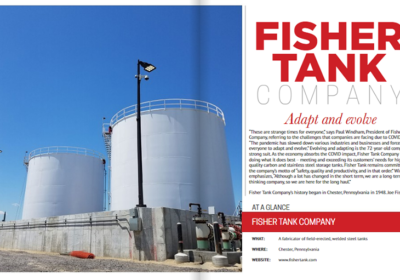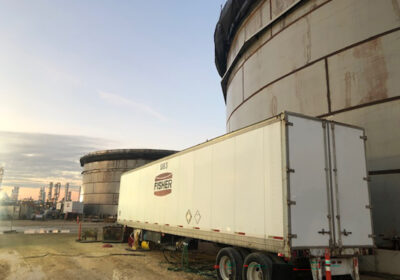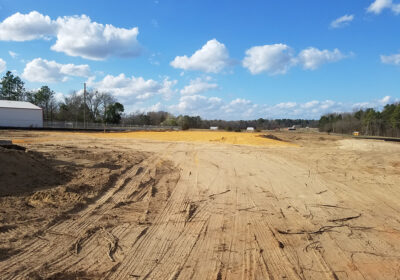HOW A FIELD ERECTED TANK IS BORN
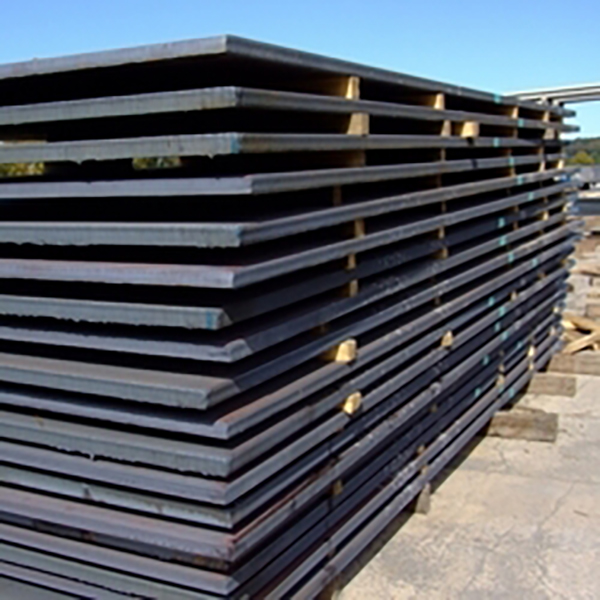
Getting a field erected welded steel storage tank from concept to construction is a complex process that requires precise planning and expert execution. It requires great communication between the customer, the tank contractor, any subcontractors, site personnel and everyone in between. While there are many different types of welded steel storage tanks used in many different industries, the construction process is similar for all of them. If you’re not already in the tank industry, you may have thought the field erected tanks you see (municipal water storage tanks, for example, or storage tanks at bulk liquid terminals in port cities) were just born right where they’re sitting. They look and act like monolithic structures, but they all started the same way – as drawings and huge flat pieces of steel plate.
Here’s a look at a general example of the construction process for an API 650 Umbrella Roof chemical storage tank, from start to finish:
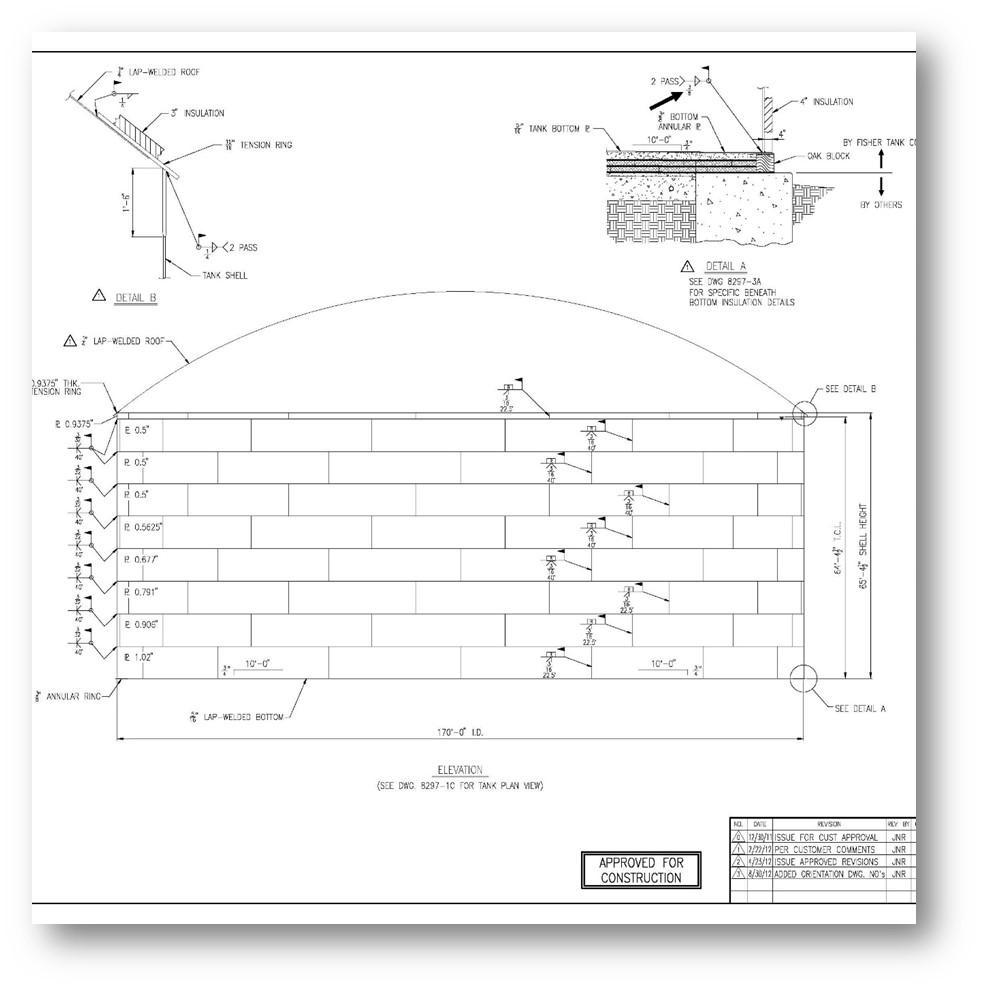
Behind the Scenes – Plans and Procedures
When a customer has awarded a contract to a tank builder, the first step is to complete the drawings and design calculations. Design calculations and drawings, including foundation loadings, are developed and submitted to the customer for review and approval. This process can take time and a lot of communication between the tank builder and the customer; revisions are made and drawings are resubmitted until they are approved.
Meanwhile, the tank company is working behind the scenes to procure the raw material that will be used to create the storage tank. Based on the tank builder’s estimates and designs, the carbon or stainless steel is ordered from a mill or warehouse and is delivered to the tank contractor’s fabrication facility.
The tank builder will also organize and issue subcontracts and schedule all subcontractor activities. The tank contractor may hold preliminary meetings with subcontractors in order to review safety compliance, schedule, project specs, materials delivery/laydown and any other pertinent information.
All of this behind the scenes activity takes place before fabrication of the tank and actual construction can begin!
Turning Plates of Steel into Curves and Pieces of Pie
Materials are delivered to the fabrication facility and stored according to applicable requirements (for example, stainless material requires special handling and storage). When the final drawings have been approved, the steel plate material is inspected to ensure that it is compliant with the project specifications. The tank shell plates are rolled to the proper curvature for the tank’s design (per drawings). Roof plates, bottom plates, and structural shapes are cut and marked per the drawings, so they will be ready for installation as the tank is constructed.
In addition to the shell plates, any other parts of the tank, such as pipe, flanges, fittings, ladders, bridges platforms, handrails, etc. are fabricated in the shop (if the tank builder has that capability). These tank accessory pieces are fabricated in the largest sections possible, per code, to be shipped to the field and installed on or in the tank during the construction process.

Prepping The Plate
If the tank contractor is able to perform plate blasting and priming in house, the fabricated pieces of steel plate are prepped in the tank builder’s shop before they are shipped to the job. (If the tank builder cannot perform blasting and priming in house, the plate material may be sent to another facility for blasting and priming before it is sent to the job site). Once the plate is at the appropriate blast profile, it is painted/primed per the project specifications.
On the Road Again

After fabrication, blasting and priming, the “tank” is delivered in pieces (shell plates, bottom plates, roof plates, structural pieces, stairs, ladders, etc.) to the job site. The deliveries are coordinated with the construction plan – the bottom plate pieces arrive first, followed by the first shell ring, etc.
Coordination of deliveries to the site, including access to the tank construction area, lay down area(s) for the pieces of the tank, and staging area for cranes, unit trailers, tool trailers, etc., is a key part of the job.
Let’s Build A Storage Tank
Construction begins with laying the bottom plates out on the foundation. Breakdown plates along the outer edges of the tank bottom are welded and tested.
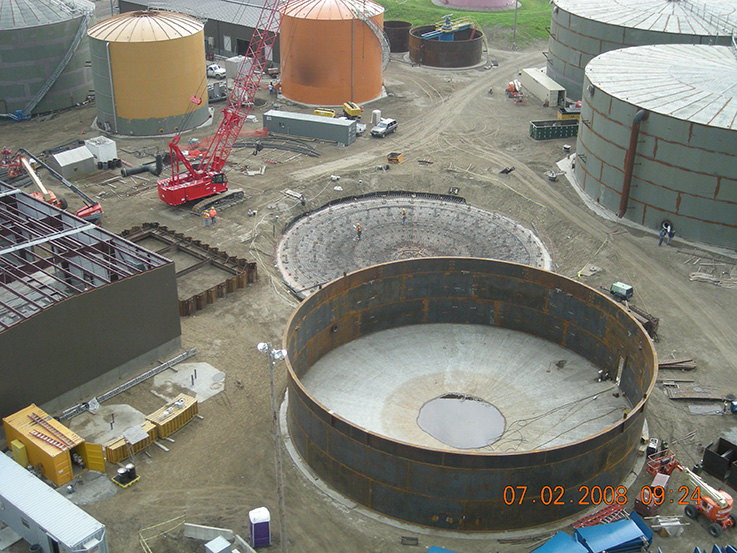
Next, the first plates for the shell ring are hung, one plate at a time. Plates are put into place using a crane. The shell plates are welded and tested as the ring is constructed. Once the first ring is complete, the crew begins hanging the second ring. As the height of the tank’s shell increases, the tank builders will install scaffolding, which is supported by brackets welded to the tank shell, from which they will work to weld out the shell plates.
The tank’s umbrella roof may be constructed as the shell is going up; either on the ground near the tank. or inside the tank shell. The tank roof is assembled and welded out as one complete structure. Appurtances such as roof nozzles, vents, etc. are installed as the roof is constructed.
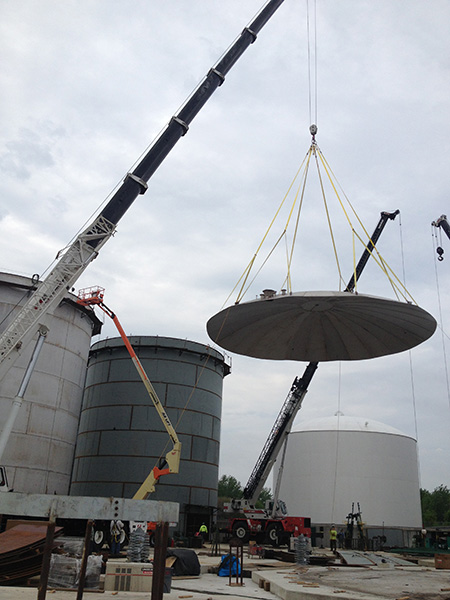
Once the tank is “shell high” (all rings are completed) and internal welding and cleaning is complete, the crew will install the tank roof. If the roof is built on the ground near the tank, the finished roof is lifted by crane to the top of the complete tank shell and welded into place. If the tank roof is built inside the tank, it is air-raised into position and then welded into place according to the drawings.
After the roof is installed, scaffolding is removed from the outside of the tank, and any exterior ladders, platforms or handrails will be welded to the tank shell or roof.
Once the tank is fully constructed, with all add-ons installed, it will be hydro tested to ensure that there are no leaks. After the hydro test, the tank will be ready for an exterior coating.
A Big Tank Is Born
And that’s it! That’s how several hundred tons of steel becomes a field erected welded steel storage tank. The process may a look a little different, depending on the type of storage tank (and what standards apply, such as AWWA D-100 for water storage tanks, or API 650 for fuel, crude, ethanol and other chemical/petrochemical storage, or NFPA for firewater tanks), and the type of tank roof (knuckle umbrella, dome roofs, internal floating roofs, etc.) but overall, this is how a storage tank gets built. Visit us at FisherTank.com to learn more about the types of tanks we build and the industries we serve.
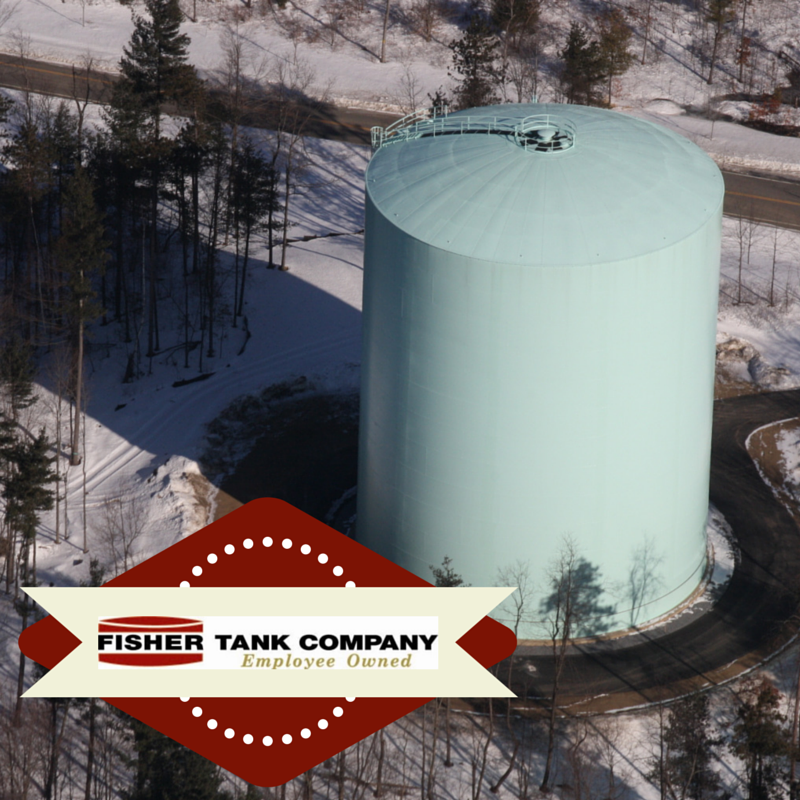
Click here to read more of our blogs


